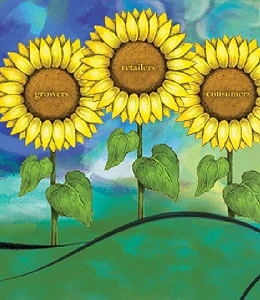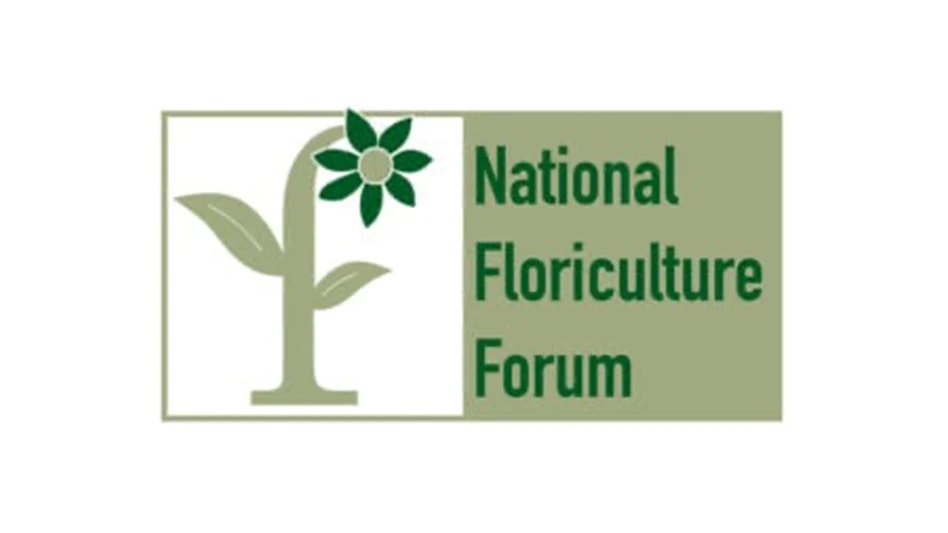
 Admit it: You've been down this road more than a few times … You've gone to all the shows—or, at least, to enough events to feel confident that your store is trendy and appealing. You've read the pertinent trade journals to get a handle on what plants you should carry. You've even "spied" on the competition just to make sure it isn't "scooping" you on hot plants.
Admit it: You've been down this road more than a few times … You've gone to all the shows—or, at least, to enough events to feel confident that your store is trendy and appealing. You've read the pertinent trade journals to get a handle on what plants you should carry. You've even "spied" on the competition just to make sure it isn't "scooping" you on hot plants.
Then …
A customer walks in and says, "I just read about this incredible, low-maintenance, brightly colored annual in (fill in the blank) magazine, and I just have to have it!"
Yet you don't have it because you're not on the subscriber list for (fill in the blank) magazine—and had no way to give your grower a heads-up that folks would be clamoring.
Or, how about this scenario: A customer wanders around the plant yard with a confused look on her face. Your highly trained staff member approaches and asks if there's something he can help her with. "I hope so," she says. "I'm an avid reader of the (fill in the blank) gardening blog, and the writer says that the (fill in the blank) plant will be all the rage this year. I really need that plant."
 Oops. Your staff member apologizes and says that, no, you don't have the plant and then doesn't say but thinks, we probably should make a mental note to read more gardening blogs.
Oops. Your staff member apologizes and says that, no, you don't have the plant and then doesn't say but thinks, we probably should make a mental note to read more gardening blogs.
Indeed, one of the great—and consistent —challenges facing the industry today is the age-old quest to get growers, retailers and consumers on the same page when it comes to plant marketing. This month, we look at strategies implemented by successful retailers—and discover that plant marketing isn't exactly art or science, but rather a combination of the two (with a lot of effective communication thrown in for good measure).
We need to talk. Mark Halla, owner of The Mustard Seed in Chaska, Minn., was recently named his state's honoree at the inaugural GIE Media Horticultural Industries Leadership Awards program at the OFA Short Course in Columbus, Ohio. Halla said the key to making sure growers, retailers and consumers are of one mind is to make sure all the parties keep an active dialog going.
"Our selection of plants and coordination with suppliers is pretty simple," Halla said. "We ask them often what new or improved varieties they are growing and how they intend to market them to the public. Based upon the amount of marketing they promise to invest, we will carry the new plant. If it is not marketed strongly, we generally pass until the demand from our customers warrants adding the plant."
To that end, The Mustard Seed's staff members make a point to listen to customer requests and pass on what they hear. "When we get questions like, 'Is there a smaller hydrangea that can grow in full shade and still bloom prolifically?,' or 'Do you have any roses that bloom weekly?,' or 'Do you carry a blue peony?,' etc., we write down the request and then ask our vendors if they have heard the request from anyone else or if they have a plant in the works," Halla said. "When it gets down to it, it is really about communication between growers, suppliers, installers and end users; the more we all talk, the better our decisions will be."
Halla said he doesn't spend a lot of time reviewing "trends" and guessing at what to carry. He makes buying decisions based on how strongly something is marketed. "I believe most of us 'don't know what we don't know,'" he said, "so anytime I see a campaign informing me or my customers of something I didn't know about, or a need I wasn't aware I had, or a solution to a problem I hadn't considered, I tend to aggressively support that product."
|
A Potential Marketing Bonanza How Garden Center magazine, the National Green Centre and Better Homes & Gardens can help you move more plants in 2012 Garden Center magazine, the National Green Centre and Better Homes & Gardens magazine are paving the way for an innovative marketing program that could pay big dividends for garden center operators. The setup works like this: The National Green Centre will host the second annual Sweet Melissa Plant Show during the hort industry's 2012 kick-off trade show on Jan. 8-9 in the Kansas City area. The Sweet Melissa program features a fashion show format, complete with a runway to show off some of the more exciting plants for the New Year. Breeders and growers partner to put their new ornamentals, natives and edibles on display, and show-goers will get the first peek at some 50 varieties likely to draw a big buzz in 2012. After the National Green Centre concludes, Better Homes & Gardens will feature varieties on display at the Sweet Melissa Plant Show via the magazine's website, www.bhg.com. This "virtual hot spot" is popular among consumers looking for the latest gardening trends. To help retailers take appropriate steps to address the anticipated consumer blitz following bhg.com reports, Garden Center magazine will send e-mail alerts to its nationwide retail audience, letting garden center operators know which plants customers are likely to be seeking, based on the bhg.com reports. In addition, the National Green Centre will send weekly e-newsletters after the event to trade show attendees, alerting them of the bhg.com coverage. Of course, retailers wishing to get ahead of the curve can attend the National Green Centre. Registration information is available at www.nationalgreencenter.org. Garden center operators who don't already subscribe to Garden Center magazine's weekly e-newsletter, The Weekly Dirt, can get on the subscriber list by visiting www.gardencentermagazine.com and clicking on the Newsletter link. |
Halla also doesn't worry about trying to figure out the chicken/egg role of the grower, the retailer and the consumer in the plant marketing equation. "The answer is 'all of the above,'" he said, "and it requires ongoing communication between all parties."
If you build it they will come. Tim Lamprey has owned Harbor Garden Center in Salisbury Mass., since 1982—long enough to have wrestled with the plant marketing issue plenty. His conclusion: Consumers will buy what you tell them to, if you're a savvy marketer.
"Look at the fashion industry," he said. "Do fashion designers ask women what types of clothing they want? No they create the demand by fashion shows, product placement in TV and movies, celebrity endorsement."
Lamprey said the horticulture industry has dipped a toe in the water in this regard, but there's still plenty of work to be done. "We have only taken infant steps to get endorsements and celeb spokespersons, i.e., P. Allen Smith and maybe Martha [Stewart]," he said.
To do a better job of marketing, he said, the industry should have branded products showcased at flower shows, botanic gardens—even plants donated to civic projects. Then, taking the marketing a step farther, those plants could be ID tagged and the branded product names featured.
"We can be our own worst enemy as far as promotion of what we want to sell that is profitable to all," he said. "Growers and retailers carp about branded products, but we sell White Flower Farm (WFF) branded products at a retail price I would never pay. And, day in and day out, people buy these plants at the higher price. Sometimes we can have the same plant variety in a WFF container and also in a black pot. People will still pay the higher price because 'it must be better if it is a White Flower Farm plant.'"
On the communication front, Lamprey said growers ask him what plants he would like. "I don't always know the new varieties that are coming out for the following year," he said. "I have started paying attention when features are done in trade magazines. This allows me to make suggestions to our growers. As far as what our customers will buy from us, color always rules. If the flowers look nice, with a different hue of pink or another color, etc., people will try the plant."
Lamprey said plant breeders can help the marketing cause immensely by providing more signage for new varieties: "I would pay for a nice sign if I knew that it provided a nice picture and had good cultural information."
Teamwork works. Tish Llaneza isn't afraid to try new things at her store, Countryside Gardens in Hampton, Va. Consequently, she puts a premium on finding growers that will work with her to create a "buzz" among her customers. Case in point: The Christmas "package" that had much of Hampton talking last winter.
"Last year I was determined to have what I called 'poinsettias in snow' for Christmas," Llaneza recalled. "I had my grower grow 4-inch pots of Breathless White euphorbia for Nov. 5th. I planted them around the edges of a 14-inch pot with an empty 8-inch pot in the middle. When the poinsettias arrived Nov. 15th, I dropped one in the middle and sold them all in two weeks before I had a chance to put them in my e-newsletter. So by thinking a little outside the box, we—the grower and myself—took the ordinary and made it something special."
Llaneza said plant marketing is a team sport. "A good retailer will tell the growers what the customers are asking for and what they want, as some growers may never meet a retail customer," she said.
To get ideas about what's "hot" and what's "not," she reads hort magazines and watches videos from all the shows she can't attend. Then she goes over a checklist born out of eight years experience as a garden center owner.
"I always ask growers, 'What is new?,'" she said. "I contract-grow with a local grower. I give him 'Tish's wish list' twice a year. That list consists of plants from seed and plugs that I want to feature. I don't get everything I want but enough to introduce some hot new annuals and perennials."
She also has a guest request book that is used frequently in case the garden center is out of a plant or customers ask about a new plant they read about or saw on TV. "We research it and get back to them as to if and when we will have it," she said. "I tell several local growers exactly what I want, and many ask me what I think of this and that, and I share my thoughts. A good relationship with a local grower is a must. I tell my growers why I can't buy from them. Sometimes it's because I can't meet a reasonable margin, or they don't have a large enough mix in my opinion. Communication is the key between a retailer and the grower. If that is there, they and the customer will be happy."
Learn how one garden center "connects the dots" between retailers, growers and garden media. Only at www.GardenCenterMagazine.com

Explore the November 2011 Issue
Check out more from this issue and find your next story to read.
Latest from Garden Center
- Weekend Reading 1/24/25
- How garden centers can leverage plants in floral design
- Hoffman Nursery announces David Hoffman as CEO, Craig Reynolds as COO
- Magic & mystique
- National Garden Bureau announces 2025 Green Thumb Award winners
- Applications now open for American Floral Endowment graduate scholarships
- Weekend Reading 1/17/25
- A nation of gardeners





